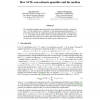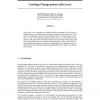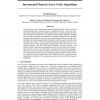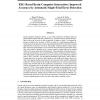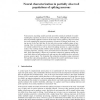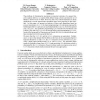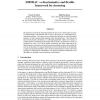107
Voted
NIPS
2007
15 years 2 months ago
2007
We investigate quantile regression based on the pinball loss and the ǫ-insensitive loss. For the pinball loss a condition on the data-generating distribution P is given that ensu...
NIPS
2007
15 years 2 months ago
2007
104
click to vote
NIPS
2007
15 years 2 months ago
2007
We present four new reinforcement learning algorithms based on actor-critic and natural-gradient ideas, and provide their convergence proofs. Actor-critic reinforcement learning m...
84
Voted
NIPS
2007
15 years 2 months ago
2007
Brain-computer interfaces (BCIs), as any other interaction modality based on physiological signals and body channels (e.g., muscular activity, speech and gestures), are prone to e...
100
Voted
NIPS
2007
15 years 2 months ago
2007
Point process encoding models provide powerful statistical methods for understanding the responses of neurons to sensory stimuli. Although these models have been successfully appl...
NIPS
2007
15 years 2 months ago
2007
The problem of obtaining the maximum a posteriori estimate of a general discrete random field (i.e. a random field defined using a finite and discrete set of labels) is known ...
103
Voted
NIPS
2007
15 years 2 months ago
2007
We present a novel linear clustering framework (DIFFRAC) which relies on a linear discriminative cost function and a convex relaxation of a combinatorial optimization problem. The...
90
Voted
NIPS
2007
15 years 2 months ago
2007
The present work aims to model the correspondence between facial motion and speech. The face and sound are modelled separately, with phonemes being the link between both. We propo...
74
Voted
NIPS
2007
15 years 2 months ago
2007
Diffusion processes are a family of continuous-time continuous-state stochastic processes that are in general only partially observed. The joint estimation of the forcing paramete...
NIPS
2007
15 years 2 months ago
2007
We study the problem of an apprentice learning to behave in an environment with an unknown reward function by observing the behavior of an expert. We follow on the work of Abbeel ...
